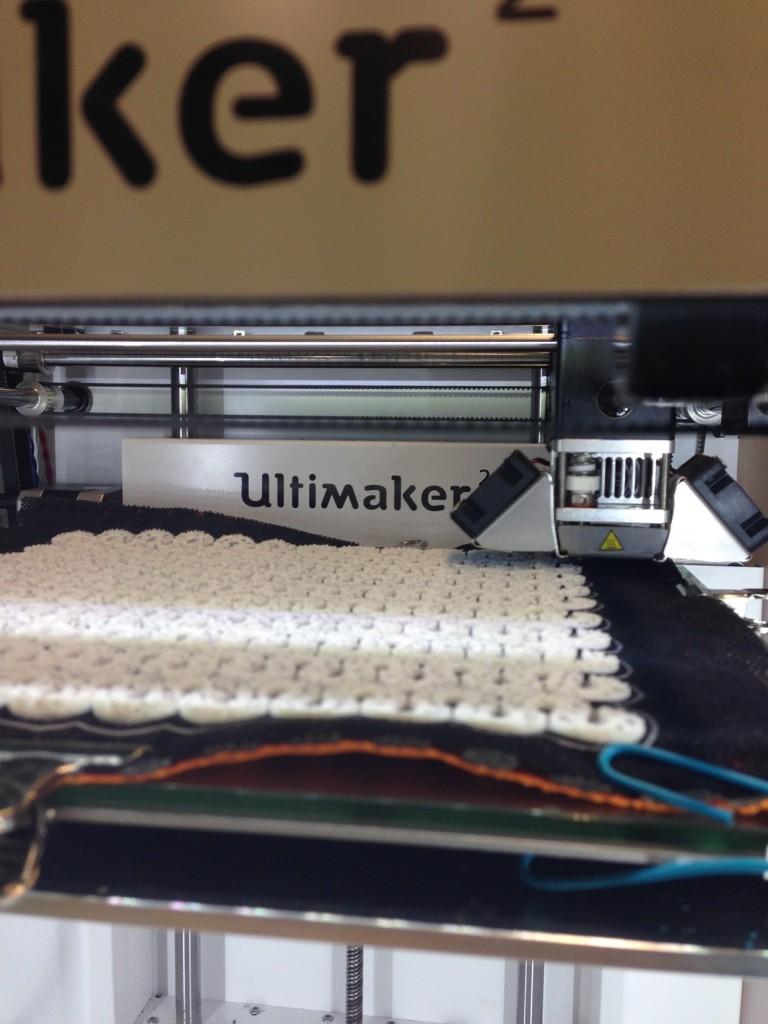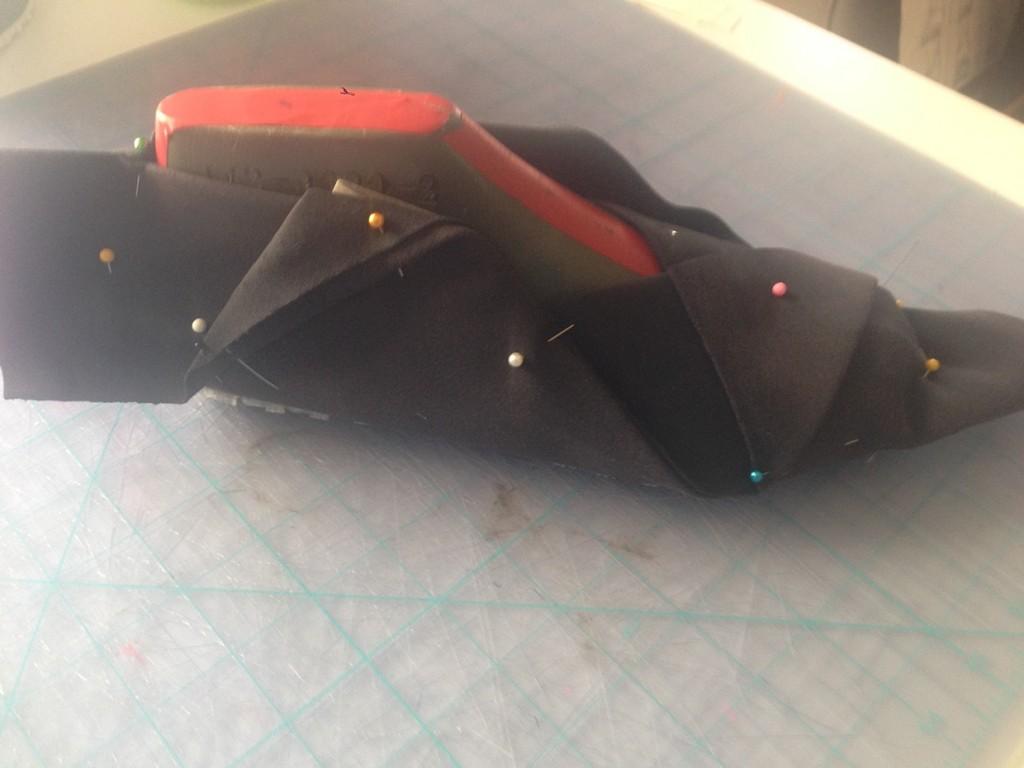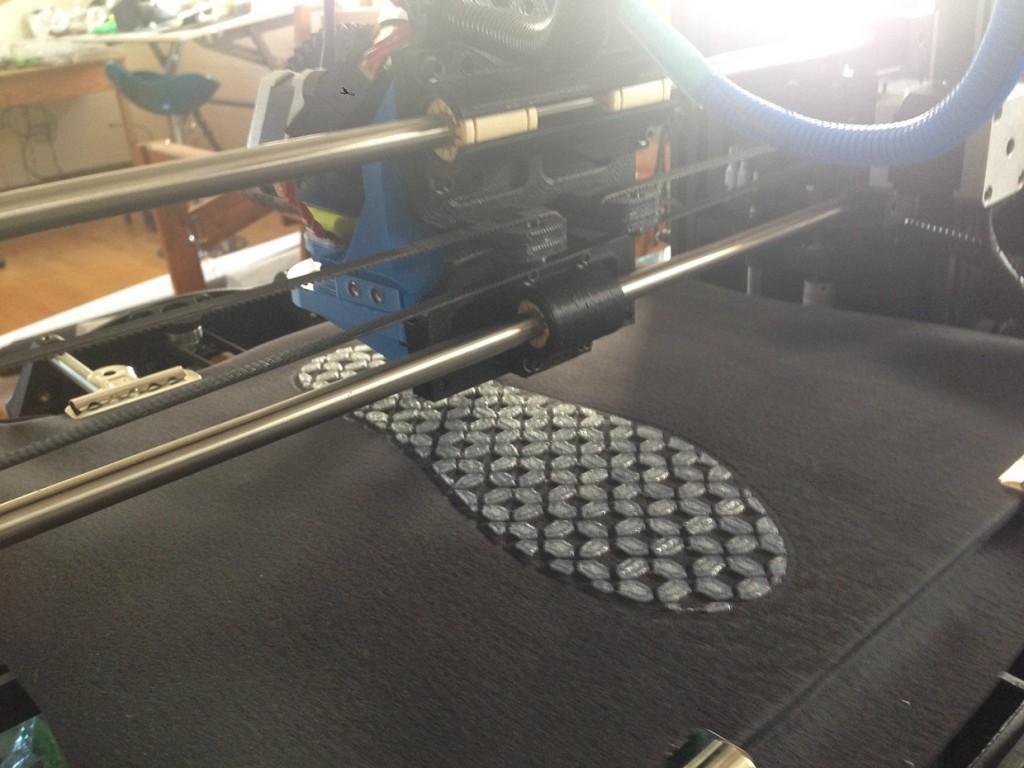Five years ago, shoe designer Rachael Noon started to experiment with the creation of outdoor footwear using injection molding as the fabrication technique. However, she soon found that the creation of the molds required a greater investment of both time and capital than were really feasible, especially when it came to trying something so experimental. She briefly considered the possibilities offered by 3D printing but because, at the time, the only materials commonly available for 3D printing were hard materials, it just didn’t work for shoes. In an interview with 3dprint.com, she explained the origination of her interest in bringing 3D printing to shoes:
“I briefly worked in the footwear industry at Wolverine World Wide in R&D. We were working on direct rubber injection on to leather. The sample was a leather upper with rubber injected on the surface for outdoor performance. There was a lot of engineering costs in the sample with CADD, tooling and manufacturing variables. When I saw the sample come back I thought, ‘Wouldn’t it have been easier to 3D print this right on to the leather?’ At the time, we were only printing footwear prototypes with SLS nylon. Flexible printing options were wanted but not available in 2009.”
Fast forward to the present and the more ubiquitous application of FDM and a series of increasingly flexible materials for printing and Noon is finally able to utilize the technology in the way she needs to create fashionable footwear. Realizing that she needed some dedicated time to experiment with 3D printing and an intellectual community in which her experimentation would receive critical feedback and support, she enrolled in a post-graduate program at SLEM in Waalwijk, Netherlands.
“There, I was able to explore 3D printing and I was really focusing on new experimental flexible filaments. I wanted to explore my initial theory of 3D printing right on to materials. With many attempts I was able to figure out the variables to print and bond flexible filament to leather, rubber, canvas and mesh with an Ultimaker2 printer. Different filaments require different print settings and I was adding to the complexity by printing on to textile surfaces. I started producing 3D pattern textile swatches. Then I moved on to just printing a pattern to the size and shape of an upper pattern.”
By December, she had enough examples of work that she was able to present the topic at The Future of Footwear Material SLEMinar at the High Tech campus in Eindhoven to members of the footwear industry. From there, she moved with the course to China for three months in order to understand footwear construction, material sourcing, manufacturing and Asia’s retail space. While she did not have access to a 3D printer while she was in China, it did lead to her reconnection with her 3D printing research. The work she produced in China was presented at Delcam’s Footwear Technology Forum in Portland, Oregon and as a result she got a job at Friton Design.
“Now I have access to a Lulzbot Taz 5 printer with a dual head extrusion. The large print bed is ideal for printing full size, wearable shoes. Having a background in graphic design helps me generate patterns, outsoles and upper designs. I used the graphics to extrude 3D models and gcode.”
 However, while she enjoys 3D printing and thinks that it has made significant contributions to the prototyping process, she’s not convinced that it’s a suitable method for end product fabrication. She has found that the durability of the filaments is not as strong as traditional methods for shoes, and that direct injection, casting and high frequency welding are still superior in mass production. In addition, the time it takes to print each shoe is still prohibitively slow. The time to produce with these methods is measured in seconds compared to the hours it takes to print shoes or parts.
However, while she enjoys 3D printing and thinks that it has made significant contributions to the prototyping process, she’s not convinced that it’s a suitable method for end product fabrication. She has found that the durability of the filaments is not as strong as traditional methods for shoes, and that direct injection, casting and high frequency welding are still superior in mass production. In addition, the time it takes to print each shoe is still prohibitively slow. The time to produce with these methods is measured in seconds compared to the hours it takes to print shoes or parts.
“It takes me 5 hours to print one outsole. An upper can take 6 to 14 hours to print depending on its complexity. The advantage of printing with flexible filaments allows for faster fit testing and leads in to the discussion of development. I enjoy 3D printing but I don’t think its a solution to the footwear industry yet. Its something to watch. Once filaments become better and the print time becomes faster then it can start to be adopted in mass manufacturing. I’m just exploring new ways to produce shoes that have not been done before.”
Let us know your thoughts on how 3D printing may be upending the shoe industry. Discuss in the 3D Printed Shoe Parts forum thread on 3DPB.com
Subscribe to Our Email Newsletter
Stay up-to-date on all the latest news from the 3D printing industry and receive information and offers from third party vendors.
Print Services
Upload your 3D Models and get them printed quickly and efficiently.
You May Also Like
Making 3D Printing Personal: How Faraz Faruqi Is Rethinking Digital Design at MIT CSAIL
What if your 3D printer could think more like an intelligent assistant, able to reason through a design idea, ask questions, and deliver something that works exactly the way the...
Reinventing Reindustrialization: Why NAVWAR Project Manager Spencer Koroly Invented a Made-in-America 3D Printer
It has become virtually impossible to regularly follow additive manufacturing (AM) industry news and not stumble across the term “defense industrial base” (DIB), a concept encompassing all the many diverse...
Heating Up: 3D Systems’ Scott Green Discusses 3D Printing’s Potential in the Data Center Industry
The relentless rise of NVIDIA, the steadily increasing pledges of major private and public investments in national infrastructure projects around the world, and the general cultural obsession with AI have...
Formlabs Teams Up with DMG MORI in Japan
In late June, Nick Graham, Chief Revenue Officer at Formlabs, announced on LinkedIn that the company had partnered with DMG MORI, one of the world’s leading machine tool companies, to...


































